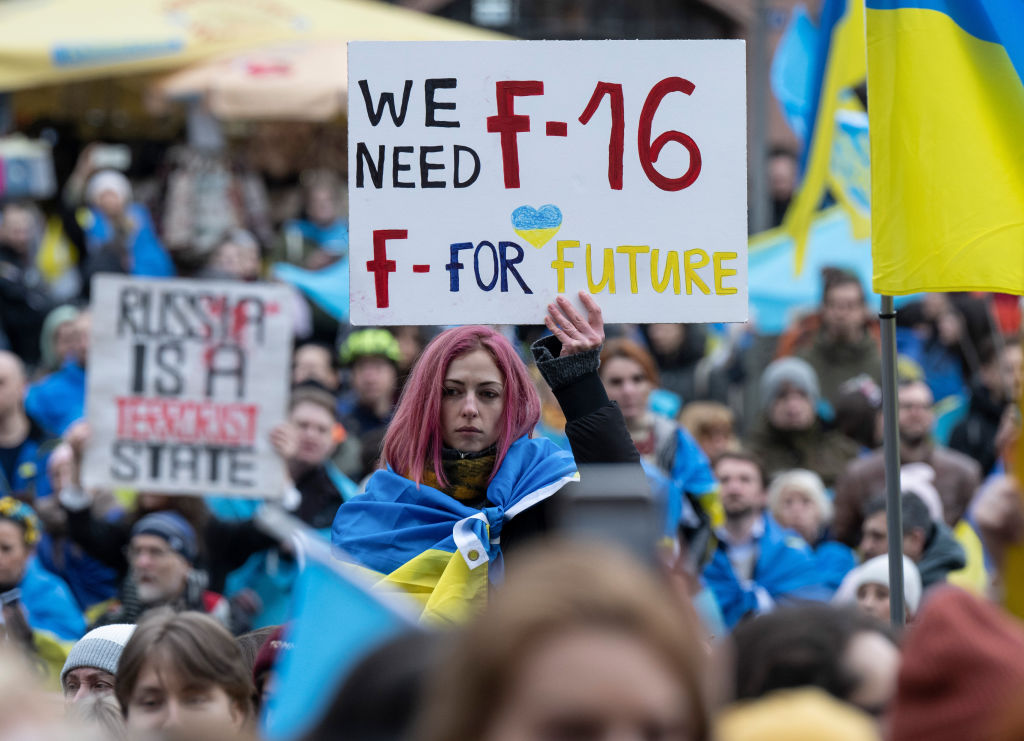
On Wednesday, President Zelensky told heads of Ukrainian diplomatic missions that some Ukrainian pilots will receive F-16 fighter jet training as early as this month, pending formal approval from Washington.
Ukraine has requested the use of F-16s for its defense for over a year, but the Biden Administration had been hesitant to approve such requests due to fear of escalating the war with Russia, says Julie Norman, a professor of international relations at University College London.
“Ukraine saw F-16s as extremely important for how they were initially planning their counteroffensive and also for long term security for Ukraine as well,” Norman tells TIME. “But I would say that the latter piece is ultimately what swayed the U.S. to support F-16s going to Ukraine.”
The Biden Administration officially changed its stance on May 19th during this year’s G7 Summit in Hiroshima, Japan. One of the conditions for Ukraine receiving these F-16 will be that it cannot use them in mainland Russia.
Below, what to know about the training program, and why the fighter jets matter.
Dates and timelines
The training is expected to begin sometime in August but exact dates and the number of planes provided remain uncertain.
Training will most likely start in Denmark and continue in the long term in Romania. The planes will not be given by the U.S. directly, but rather by partner countries in Europe. The re-export of American F-16s is still dependent on formal approval, since all countries that operate them must receive approval from Washington first. According to manufacturer Lockheed Martin, there are currently 3,000 F-16s in use across 25 countries.
Only a few pilots with strong English-language skills will be sent for the first rounds of training, since Ukraine cannot afford to take too many pilots away from the battlefield, says Norman. This means it will probably take several months before Ukraine is able to use the F-16s in the war.
But delays could be in store given bureaucratic issues and that Ukraine is still waiting on official U.S. approval, according to John Teichert, a retired U.S. air force brigadier general.
“Since the policy reversal by Biden in May, we have been collectively dragging our feet,” he says. “The NATO countries are ready to start the training process for the Ukrainian pilots, but we haven't been able to get an official training syllabus that can be approved by the United States.”
Either way, Norman says that the Ukrainian military is likely to be relatively efficient once the training begins, given that they have been “very quick in the upscaling and uptake of every other kind of equipment that's been given to them.”
Why Ukraine wants F-16s
Ukraine’s air fleet is made up of Soviet jets designed in the 1970s, like the Mikoyan MiG-29. Russia, on the other hand, uses more modern planes that can fly at higher altitudes and detect other planes from further away. This makes Ukrainian planes vulnerable to Russian air defense missiles, especially at high altitudes.
“A Russian jet can see 2-3 times further with its radar than our fighter,” Yurii Inhat, a spokesman for Ukraine’s airforce command told the Wall Street Journal. “Our fighter is simply blind, it cannot see.”
Ukrainian planes are also more difficult to maneuver and slower than Russian planes. “In air to air combat, whoever fires first is probably going to win,” says Michael Clarke, a professor of war studies at King’s College London. “When a Ukrainian aircraft goes up against a Russian aircraft, when it's aircraft to aircraft, at the current moment they normally lose.”
Russia has also planted landmines in much of occupied Ukrainian soil, making it dangerous and costly for Ukrainian soldiers to attempt to take back territory on foot.
“Even defending within Ukraine’s borders is a challenge,” says Norman. “Ukraine sees the F-16s as essential for getting over current battle lines, especially as we’ve seen this kind of slow-go so far with the counteroffensive.”
F-16s could help give Ukrainians what military strategists refer to as “air superiority.” This would mean that Ukrainians could prevent Russian planes and helicopters from attacking Ukrainian troops on the ground. “At the moment, when Ukrainian forces have to slow down to get over minefields and across barriers they are very vulnerable to air attack and other missiles,” says Clarke.
The limits of the F-16s
Experts tell TIME that the F-16s are unlikely to dramatically change the course of the war. Still, they add, it will deepen Ukraine’s relationship with both the U.S. and the West at large for decades to come.
“At the strategic level, this ties Ukraine to the Western way of war and to Western interoperable capability for 20 to 30 years,” says Teichert. “The commitment of the United States to a country that gets our weapon systems comes with exercises, education, training, and upgrades to those systems. So it just gives them this long term relationship with the West and the United States unlike any other weapons system.”
More Must-Reads From TIME
- The 100 Most Influential People of 2024
- How Far Trump Would Go
- Why Maternity Care Is Underpaid
- Scenes From Pro-Palestinian Encampments Across U.S. Universities
- Saving Seconds Is Better Than Hours
- Why Your Breakfast Should Start with a Vegetable
- Welcome to the Golden Age of Ryan Gosling
- Want Weekly Recs on What to Watch, Read, and More? Sign Up for Worth Your Time
Contact us at letters@time.com